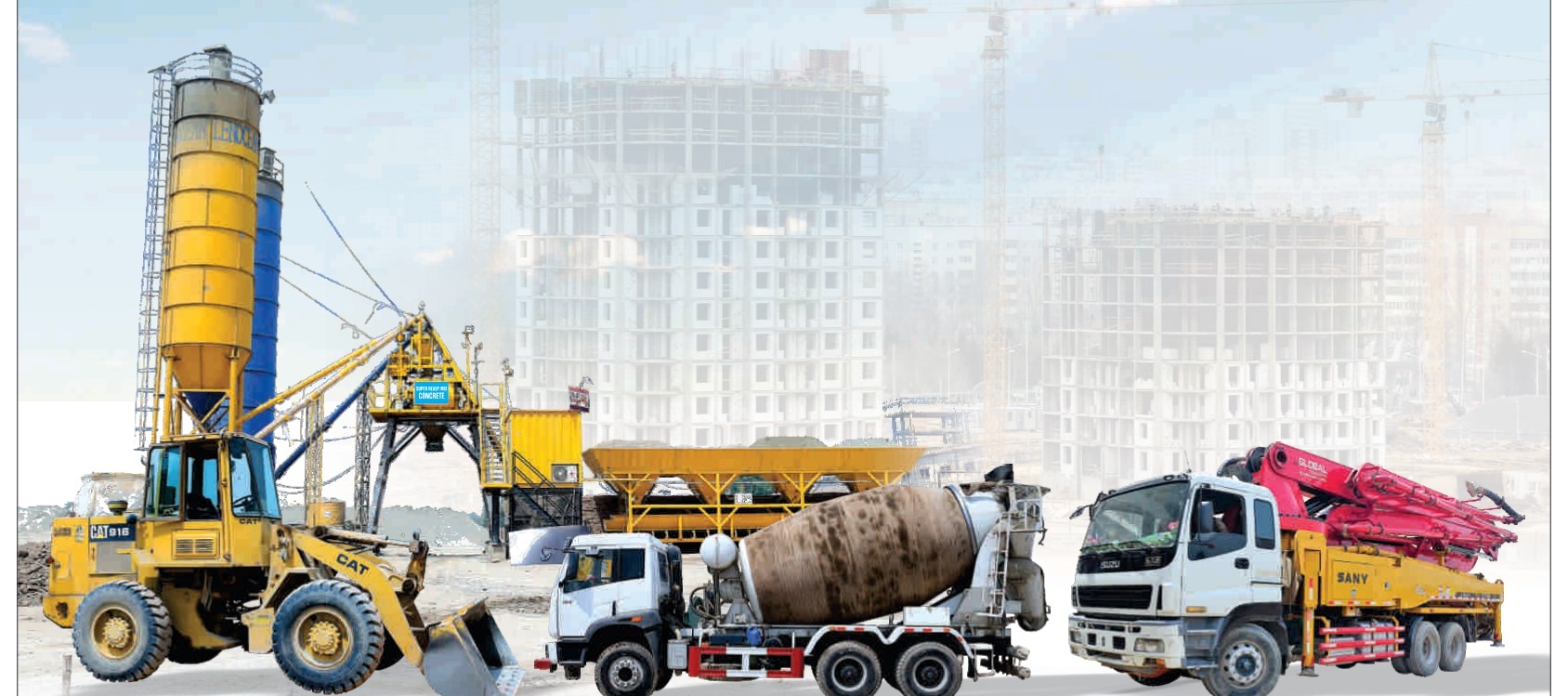
Ultra-Durable Choice: C-55 Ready Mix Concrete (8000 PSI Cubical, 6000 PSI Cylindrical Strength)
Published on by Rashid Minhas
Average Read time: 5 minutes 51 seconds
Introduction to C-55 Ready Mix Concrete
What is C-55 Grade Concrete?
C-55 Ready Mix Concrete is a high-performance structural concrete engineered for the most demanding civil engineering projects. It is part of the high-strength concrete classification, defined by a compressive cube strength of 8000 PSI (approx. 55 MPa) and a cylindrical strength of 6000 PSI (approx. 41 MPa).
The Role of High-Strength Mixes
As urban infrastructure grows taller and denser, stronger materials are essential. C-55 offers:
- Reduced cross-sections
- Greater load resistance
- Increased durability
Understanding the Strength Ratings: 8000 PSI vs. 6000 PSI
Cube vs. Cylinder Testing
- Cube Tests are standard in Europe and Asia
- Cylinder Tests are used predominantly in the U.S.
Accuracy and Relevance
A cube strength of 8000 PSI converts to a cylinder strength of 6000 PSI, using a factor of approximately 0.75. This ensures engineers can reliably predict field performance.
Why Use High-Strength Concrete?
Structural Needs
- Required in high-rise columns and shear walls
- Essential in long-span bridge girders
Modern Engineering Standards
Many international codes now recommend or mandate high-strength concrete for:
Many international codes now recommend or mandate high-strength concrete for:
- Seismic zones
- Urban vertical expansion
- Heavy industrial loads
Mix Design Specifications for C-55 Concrete
ComponentEstimated Quantity per m³
Cement | 500–600 kg
Water | 140–155 L (W/C ≈ 0.28–0.30)
Fine Aggregate | 650–750 kg
Coarse Aggregate | 1000–1200 kg
Precision in material selection and proportioning is essential to prevent shrinkage and maintain flowability.
Key Admixtures and Chemical Enhancers
- Silica Fume: Boosts early strength and impermeability
- Superplasticizers: Enhances flow without increasing water
- Fly Ash/GGBS: Increases durability and sustainability
- Retarders/Accelerators: Control set time based on climate
Production and Delivery Guidelines
Controlled Batching
- Mixed at central plants with computerized batching systems
- Admixtures added onsite if needed for temperature or time delays
Site Quality Tests
- Slump Test (target: 75–100 mm)
- Temperature & Air Content
- Cube or Cylinder Casting for 7 & 28-day strength tests
Major Applications of C-55 Concrete
- Mega structures and skyscrapers
- Precast prestressed bridge segments
- Industrial floors and rail transit systems
- Dams and water containment structures
Performance Comparison: C-50 vs. C-55 vs. C-60
GradeCube Strength (PSI)Best Use
C-50 | ~7000 PSI | Towers, commercial buildings
C-55 | ~8000 PSI | Bridges, precast, foundations
C-60 | ~8700 PSI | Precast tunnels, ultra-high-rise cores
Workability and Slump Adjustments
High-strength concrete like C-55 tends to be stiff. Best practices include:
- Adjusting slump with superplasticizers
- Avoiding excessive water that lowers strength
- Using conveyors or advanced pumps for placement
Curing Methods for Maximum Strength Retention
Wet Curing
- Keeps the surface moist using sprays or covers
- Minimizes plastic shrinkage cracks
Steam Curing
- Speeds up strength gain for precast elements
- Ideal for controlled factory settings
Key Benefits of C-55 Ready Mix Concrete
- Incredible compressive strength
- High resistance to chemical and mechanical erosion
- Minimal long-term maintenance
- Enables slim structural profiles for architectural freedom
Limitations and Precautions
- Heat of hydration must be managed in mass pours
- Increased cost due to high cement and additive content
- Skilled labor needed for placement and compaction
Durability in Harsh Environments
- Outstanding freeze-thaw resistance
- Sulfate attack protection
- Suitable for marine and industrial exposure zones
Sustainability in High-Strength Concrete
SCMs and Green Concrete Initiatives
- Incorporates silica fume, fly ash, GGBS
- Less cement per strength unit = lower CO₂ emissions
Lower Life Cycle Carbon Footprint
- Long service life reduces replacement needs
- High recyclability of unused material
Cost Considerations and Pricing Estimates
Cost ElementEstimated Price (per m³)
Base Mix | $200 – $250
Admixtures | $25 – $50
Delivery & Pumping | $80 – $120
Project location, scale, and raw material sources impact pricing.
Standards and Compliance
- ASTM C39/C94: Concrete strength & delivery
- ACI 318: Structural code compliance
- IS 456 / EN 206: Exposure class and durability requirements
Best Practices for Contractors and Engineers
- Inspect formwork stability before pouring
- Conduct trial batches to confirm mix behavior
- Schedule continuous pours to avoid cold joints
- Begin curing within 2 hours of finishing
FAQs About C-55 Ready Mix Concrete
1. Is C-55 concrete suitable for bridges?
Yes, it's widely used in bridge decks, girders, and supports due to its strength and durability.
2. How long does it take to gain strength?
C-55 typically gains 60–70% of its strength in 7 days and reaches full strength in 28 days.
3. Can it be used in water-retaining structures?
Yes, with proper additives, C-55 is impermeable and ideal for tanks, dams, and reservoirs.
4. Is it pumpable over long distances?
Yes, but high-pressure pumps and slump optimization are required due to its density.
5. What reinforcement is used with C-55?
Usually high-yield steel (TMT or HYSD bars) with ≥500 MPa yield strength.
6. Is C-55 eco-friendly?
It can be, especially when designed with SCMs and recycled aggregates.
Conclusion
C-55 Ready Mix Concrete with cubical strength of 8000 PSI and cylindrical strength of 6000 PSI is the modern builder’s go-to solution for projects demanding exceptional strength, durability, and sustainability. Whether you're working on a high-rise tower, a bridge deck, or a precast panel, C-55 ensures long-lasting performance with a smaller environmental footprint. With the right design, placement, and curing, this high-strength mix delivers superior results under any challenge.